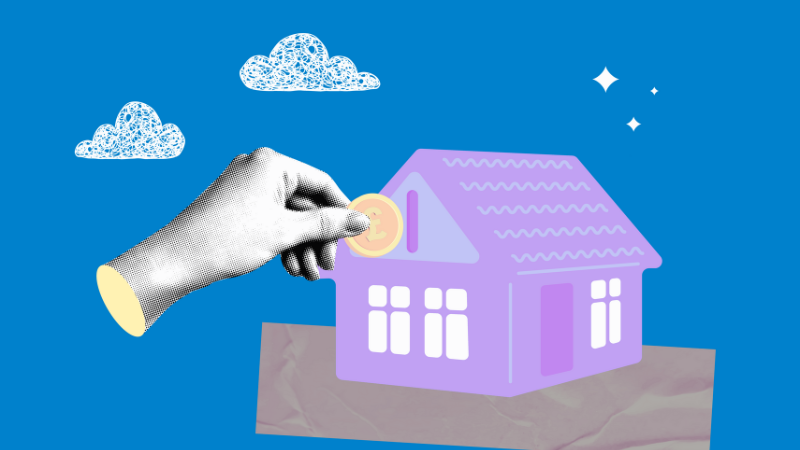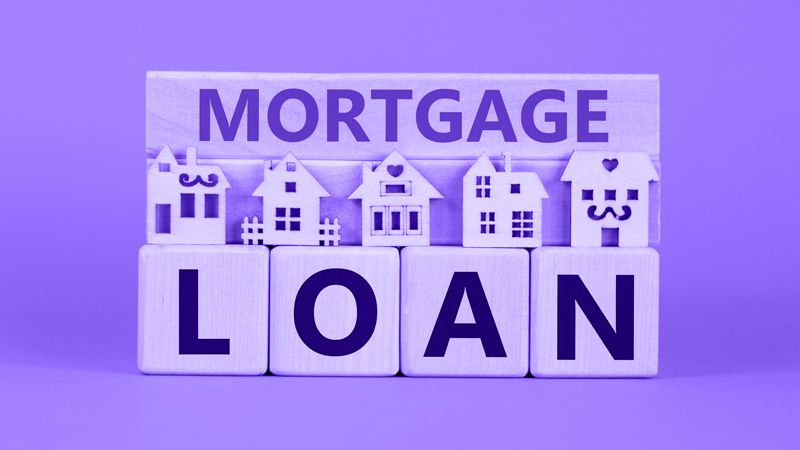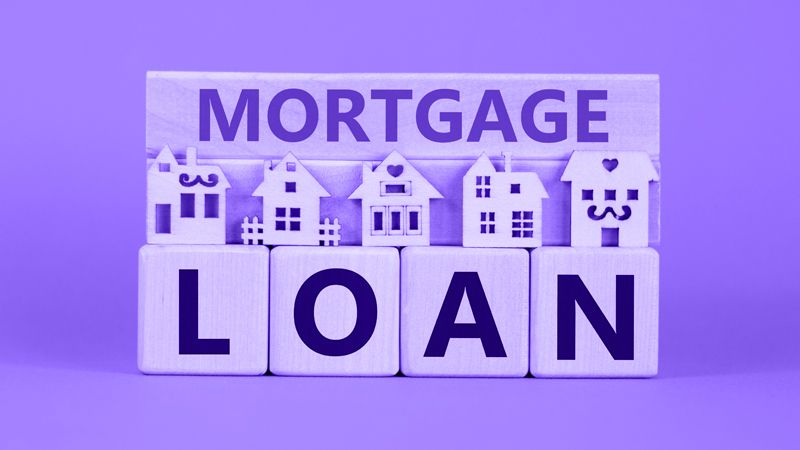Secured Loans Explained: An Expert Guide for Smart Borrowing [2025]


Secured loans let you borrow up to £100,000 or even more. That's by a lot more than unsecured loans that max out at £50,000. The big difference comes from a simple fact - you need to put up an asset as collateral, which is usually your home.
Putting your property up as security might make you nervous. But secured loans come with some real benefits. The interest rates are lower than what you’d pay for unsecured loans. Lenders are also more likely to say yes to applications they might turn down otherwise. Bridging loans add another option that helps in specific money situations. This piece delves into what secured loans really are, who can obtain one, and the various types available in 2025. You’ll also learn everything you need to know before you make this big money decision.
What is a secured loan and how does it work?
You put your asset at stake when you take a secured loan. This financial arrangement offers benefits but comes with significant responsibilities. Learning how these loans work will help you make better borrowing decisions.
Definition and key features
A secured loan needs you to pledge an asset—typically your home—as ‘security’ or ‘collateral’ for the borrowed money. This creates a direct connection between your loan and your property. The core principle is simple – lenders can sell your property if you miss your repayments.
Your monthly repayments include the borrowed amount plus interest. Lenders calculate the interest rate as a percentage of the borrowed amount, which can be fixed or variable, depending on your loan type. These loans are accessible to more people under different names like homeowner loans, home loans, or second-charge mortgages. The basic concept remains the same—your property guarantees the loan.
Secured loans let you borrow much larger amounts compared to personal loans. Personal loans usually stop at £25,000-£50,000, while secured options can go up to £100,000 or higher. This makes them a great choice, especially when you have major expenses like home improvements or education costs.
How is it different from unsecured loans?
The main difference between secured and unsecured borrowing shows up if you can’t repay. Lenders cannot take your assets right away with unsecured loans if you default. However, secured loans give lenders the right to take your pledged asset to get their money back.
Here are more differences:
- Approval requirements: You can get secured loans more easily with poor credit since your collateral reduces the lender’s risk
- Repayment periods: You get longer terms with secured loans—up to 40 years—which means lower monthly payments but more interest overall
- Interest rates: Secured loans often have lower interest rates than unsecured ones because lenders take less risk
- Application process: You need more paperwork for secured loans as lenders check both your finances and your collateral’s value
Why lenders require collateral
Lenders ask for collateral to protect themselves financially. Your asset works as their safety net—they can legally sell it to recover their money if you stop making payments.
This protection helps you get better loan terms. Lenders can give credit to people who might not qualify otherwise, including those with poor credit histories or limited credit records.
The value of your pledged asset plays a big role in your loan application. Unlike unsecured loans that only look at your credit score and financial history, secured lending decisions factor in your assets’ worth. The loan-to-value (LTV) ratio—your loan size compared to your asset’s value—usually determines your borrowing limit.
Using your home as collateral is risky, but it opens up borrowing options that might not be available otherwise. This is particularly helpful if you have challenging financial circumstances.
Who can apply for a secured loan?
Secured loans are accessible to a wider range of people than other financing options. You don’t need perfect credit scores or high income. The most important factor is having enough equity in an asset, usually your home.
Self-employed and freelancers
Working for yourself shouldn’t limit your borrowing choices. You can apply for a secured loan if you’ve been self-employed for at least six months. Some lenders might ask for two to three years of business history. This makes secured borrowing valuable, especially when you have a new business or freelance work and can’t get unsecured credit.
Self-employed applicants need to show proof of income through:
- Management accounts and bank statements
- Accountant-certified tax calculations or SA302 forms
- Future income projections from your accountant
Limited company directors can borrow based on their salary and dividends. Some flexible lenders might look at company profits too when they calculate your borrowing amount.
Contract workers often struggle to get loans despite having steady work. The good news is that some lenders understand how contract work operates. They treat these applications like regular employment and focus on steady income rather than permanent contracts.
Retired individuals
Your age won’t stop you from getting a secured loan. Many lenders accept applications from people up to 85 years old. This makes secured loans great for pensioners who want money for home improvements, family gifts, or travel.
Lenders accept both state and private pension income. Most lenders set the maximum working age between 70-75 years. This means a 60-year-old could get a 15-year loan based on current income without showing pension proof.
Loans that go beyond retirement need proof of enough post-retirement income. This could be from pensions, investments, or other sources. Lenders need to know you can keep up with payments throughout the loan.
You can use pension lump sums to pay off secured loans when you retire. Just remember that early repayment charges might apply.
Applicants with poor credit history
The biggest advantage of secured loans is that people with bad credit can get them. These loans are easier to get than personal loans if you have poor credit.
You might qualify even with:
- Mortgage arrears
- County Court Judgments (CCJs)
- Other missed credit payments
The math is simple—your property acts as a safety net that cuts the lender’s risk. This security helps lenders be more flexible about credit history compared to unsecured loans.
Bad credit usually means higher interest rates and fees than someone with good credit would pay. If you share ownership of your home, both owners must apply together and share responsibility for payments.
Sometimes it’s better to improve your credit score first or look at bad-credit credit cards instead of rushing into a secured loan.
Mortgageable offers a free Equifax Credit Report as part of its service, with no obligation to proceed. Something worth considering.

Types of secured loans available in 2025
The secured loan market has become one of the most important financial sectors in 2025. UK adults now understand these loans better than ever before. Approximately half of all homeowners now view secured loans as a viable means of raising capital.
Homeowner loans
Homeowner loans, sometimes called second charge mortgages, help you realise the potential of your property’s equity without changing your existing mortgage rate. This loan type shows impressive growth. Total secured lending jumped 40% in just two years—from £333m in Q1 2023 to £470m in Q1 2025. Experts predict that more than 42,000 borrowers will take out homeowner loans by year-end, up from 35,706 in 2024. These loans offer bigger amounts than unsecured options, with extended repayment terms and better interest rates.
Secured business loans
Business owners can find great financing options through secured loans in 2025. You can use these assets as collateral:
- Your main residence (with proper consent)
- Commercial property or office space
- Buy-to-let properties or holiday lets
- Land (with or without planning permission)
Secured business loans let you borrow between £100,000 and £5 million, based on your available equity. These loans have become popular among sole traders and small businesses that need to fund expansion, refinance expensive debts, or handle cash flow issues. Lenders often show more flexibility with credit profiles and trading history because these loans have collateral backing.
Bridging loans
Bridging loans work as short-term secured financing that you typically repay within 12 months. The Bridging Trends report from 2024 Q2 shows that 23% of borrowers used these loans to prevent property chain breaks. These loans come in two types:
Open bridging loans have no fixed repayment date, offering flexibility but typically at higher interest rates.
Closed bridging loans feature a predetermined repayment date based on when funds will become available (such as from a property sale), usually at lower interest rates.
You can arrange bridging loans quickly to borrow between £50,000 and £10 million. Lenders usually cap maximum loans at 75% of property value.
Secured personal loans
Secured personal loans use your assets as security and often come with better terms than unsecured options. Homeowners prefer these loans to fund home improvements, pay personal tax bills, cover school fees, or consolidate debts. The market grew by 31% from 2020 to 2024—the highest growth in the mortgage industry. Homeowners unlocked £6.5 billion of housing wealth through secured loans between 2020 and 2024. This represents a 27% increase from the previous five-year period.
Common reasons people use secured loans
Common reasons people use secured loans
People choose secured borrowing for many practical reasons that help them in different life situations. These loans work well for improving property value and managing debts at various life stages.
Home improvements and renovations
Secured loans are perfect for property improvements. Homeowners use them to fund major renovation projects that make their homes better and more valuable. Some popular projects include:
- Loft conversions and extensions
- Kitchen and bathroom refurbishments
- Total property redecoration
- Conservatory additions
- Central heating and plumbing updates
These changes make your home more comfortable now and could boost its sale value later. Research shows that UK residents over 65 prefer home improvement loans more than any other type.
Debt consolidation
Many people use secured loans to consolidate their debts. You can pay off multiple debts with one lump sum and manage just a single monthly payment. This approach helps you:
- Make your finances simpler with one fixed monthly payment.
- See your total debt situation clearly.
- Pay less interest with better rates.
Here’s a typical example: borrowing £6,000 over 3 years at 6.1% APR means monthly payments of £182.36, with a total repayment of £6,564.86. Secured loans are easier to get for debt consolidation than personal loans, even with bad credit.
Large purchases or family support
These loans help fund big one-off expenses that might be hard to afford otherwise. Common uses include:
- Buying motorhomes or vehicles.
- Paying for weddings or dream holidays.
- Helping family members with property deposits.
More parents now help their children buy homes. You can borrow against your property to provide deposits for your children or grandchildren, which helps them get better mortgage rates.
Business expansion or investment property upgrades
Business owners can borrow between £100,000 and £5 million to grow their companies, depending on their available equity. They often use the money to:
- Buy essential equipment or machinery.
- Renovate and modernise business premises.
- Add space to increase capacity.
Property investors use secured loans on buy-to-let properties to grow their portfolio or improve existing properties. These loans might also reduce property income tax since interest payments can offset rental profits.
What to know before applying for secured borrowing
You should know several significant factors that will affect your borrowing experience before you commit to a secured loan. A good understanding of these elements will help you decide if secured borrowing lines up with your financial situation.
Interest rate types: fixed vs variable
The choice between fixed and variable interest rates is a fundamental decision. Fixed rates stay the same throughout an agreed period and give you predictable monthly payments whatever the market does. Variable rates can change based on market conditions, which means your repayments might go up or down.
Each option has distinct advantages:
- Fixed rates give you certainty for budgeting but usually start higher than variable rates
- Variable rates often start lower but might increase if market rates rise
Lenders show rates as APRC (annual percentage rate of charge), which has all interest and charges over the full loan term. A “representative APRC” means 51% or more of customers get this rate or better.
Loan terms and repayment structure
The length of your loan repayment period needs careful thought. Your monthly payments become more affordable when you spread them over a longer period, but you’ll pay more interest overall. Yes, it is possible to get secured loans with terms up to 20-35 years.
You might face early repayment charges if you end the contract before the agreed term. Check these details in your terms and conditions before signing any agreement.
Documents and eligibility checks
Lenders need complete documentation to verify your identity, financial status, and property ownership. You’ll need:
- Proof of ID (passport or driving licence)
- Recent utility bills or bank statements (within three months)
- Income verification (payslips or tax returns for self-employed)
- Property ownership evidence (mortgage statement or title deeds)
Most lenders provide eligibility checkers that show your chances of acceptance without affecting your credit score.
Risks of default and repossession
Note that failing to keep up with repayments could mean losing your home. Repossession follows a legal process that has formal notices, court hearings, and possible eviction.
Repossession is the last option lenders want to take. They first try to work out repayment arrangements. Notwithstanding that, a default stays on your credit record for six years and severely affects your future borrowing chances.
Related quick help guides:
Conclusion
Secured loans give you clear advantages in certain borrowing situations. Their higher borrowing limits and lower interest rates make them attractive, especially when you have big expenses like home improvements, debt consolidation, or business expansion. On top of that, these loans are available to more borrowers, including self-employed people, retirees, and those with poor credit histories.
Using your home as collateral needs serious thought. You must review your financial situation and ability to repay carefully. The risks can be severe – missed payments could lead to losing your property.
The secured loan market has changed by a lot in 2025, with options now fitting various needs. You might want a homeowner loan, business financing, a bridging loan, or personal borrowing. Learning about each type’s features helps you pick the best option.
Your choice between fixed and variable interest rates will change both your monthly payments and total repayment amounts. The length of your loan term plays a role, too. Longer terms mean lower monthly payments but cost more in interest overall.
Secured loans can be great financial tools if you use them wisely. They help you achieve goals that might be out of reach otherwise, particularly if you have few other options. But this availability comes with big responsibilities. You must balance the benefits against the real risk to your home.
Note that secured borrowing is a serious, long-term commitment. Good research, an honest look at your finances, and a clear purpose for borrowing will help you decide if a secured loan lines up with your needs and situation.
Key Takeaways
Secured loans unlock significant borrowing potential by using your home as collateral, offering amounts up to £100,000+ compared to £50,000 maximum for unsecured options.
• Secured loans offer lower interest rates and easier approval for poor credit applicants, but risk property repossession if payments are missed.
• Self-employed individuals, retirees, and those with bad credit can qualify more easily than with unsecured loans due to reduced lender risk.
• Popular uses include home improvements, debt consolidation, and business expansion, with loan terms extending up to 35 years for affordability.
• Choose between fixed rates for payment certainty or variable rates for potentially lower initial costs, but always assess repayment capability thoroughly.
• The secured loan market grew 40% in two years, with over £6.5 billion of housing wealth unlocked between 2020-2024, reflecting increasing popularity.
Whilst secured loans provide valuable access to capital with favourable terms, the fundamental risk remains clear: your home serves as the ultimate guarantee, making careful financial planning essential before proceeding.















